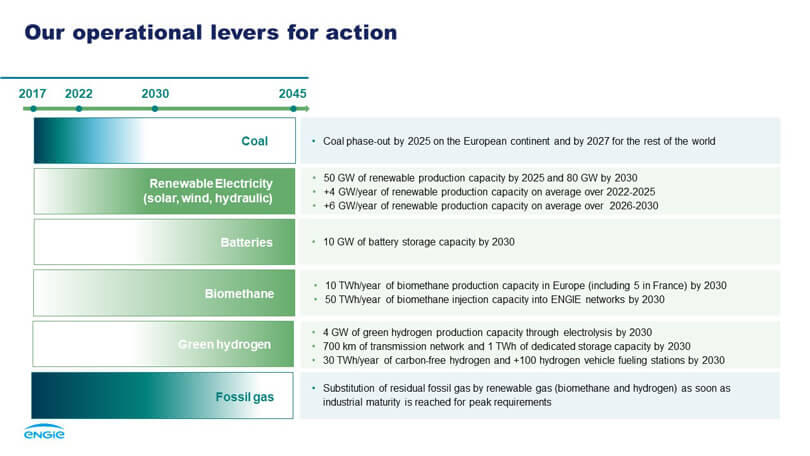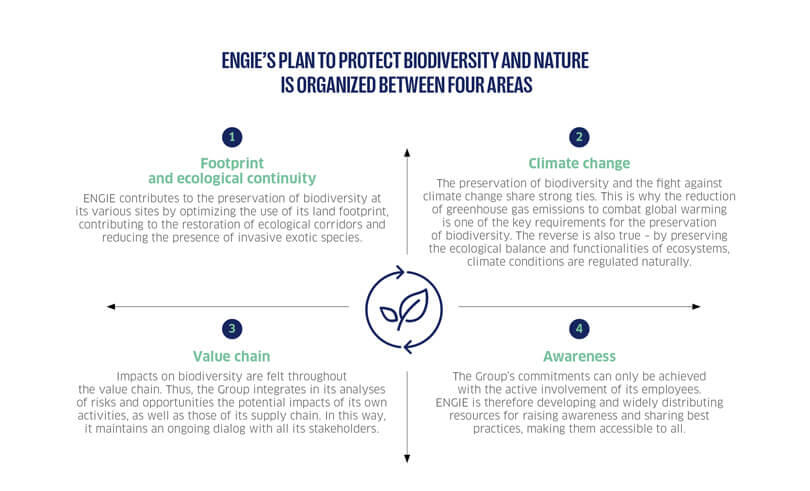
ENGIE, a world leader in energy transition
ENGIE is a global industry leader in low-carbon energy supply and related services. Along with its employees, customers, partners and stakeholders, the Group is committed for the past twenty years to accelerating the transition to a carbon-neutral world through more energy-efficient and environmentally friendly solutions.
Driven by its Purpose enshrined in its bylaws, ENGIE now relies on a streamlined business model, which aims to develop the renewable energy sector and local low carbon energy networks, as well as to adapt its centralized networks and thermal production activities, in particular to the phasing out of coal, the development of renewable gases and electricity storage batteries.
ENGIE’s business model is based on 4 core businesses to build tomorrow’s low-carbon energy system and achieve the Net Zero Carbon target by 2045 for the Group and its customers.








